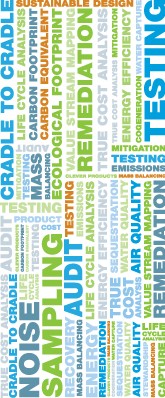
You could set up an environmental management system to help manage risks and take regular measurements of air, water and soil quality so that you can respond quickly to any incidents.
Your design and technology decisions will play a significant role in your performance in sustainability, particularly your economic viability and environmental sustainability.
For example, you may decide to invest in upgrading equipment or developing new production technology so that your energy consumption is reduced – achieving cost savings over time as well as environmental benefits. You might undertake capital expenditure projects to set up solar panels and water capture systems; again these can deliver cost benefits over time.
Or, on a smaller scale you might install motion sensors for lights or establish procedures to ensure that equipment is switched off when not in use.
Product design also links to sustainability issues.
Customers are becoming more aware of the energy consumption of their products from both an environmental and a cost perspective. They are becoming more informed about embedded carbon and there is increasing demand for information about the types of materials and energy used in production and how they are generated.
There is a growing market for consumer and commercial products with ‘clever’ features. These go beyond products with generally low energy use to include innovative features such as self monitoring and auto switching to reduce energy consumption or mechanisms that capture and reuse water.

